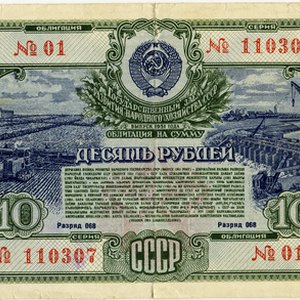
The average mutual fund return for a 10-year period is used by many investors to chart the long-term performance of mutual funds, particularly equity mutual funds. However, there are many caveats that the investor should consider when weighing investment options. Ten-year moving averages often reflect long-term stock trends, and long-term averages reflect comparative management styles among different stock funds.
Consider the Major Trend of Stocks
Analysis of mutual fund returns, particularly stock mutual funds, requires analysis of major trends over time. Long-term trends, such as a 10-year trend, provide the investor with the opportunity to compare a specific mutual fund or a group of mutual funds with unmanaged indices such as the Standard and Poor's 500 Stock Index or the Dow Jones Industrial Average, allowing the investor to measure the real performance of a managed fund.
Compare All Costs to Compute 10-Year Returns
Every mutual fund describes its objectives in the sales prospectus. Different funds may emphasize dividend income, long-term capital gains, a focus on large companies or small companies, or a blend of investment styles. Mutual funds have high transaction costs compared to unmanaged indexes, and fees vary substantially among different mutual funds. All funds have trading costs, management fees, and expenses. Over a 10-year period, a difference of three percent per year will result in a gap of total return of over 40 percent compounded between two funds with the same market result but different cost structures.
Compare Different Sectors
Mutual funds generally seek to track different market sectors such as large or small capitalization, international, or domestic stocks. For example, during the 1990s, the technology stocks of the NASDAQ greatly outperformed the Dow Jones and Standard and Poor's averages.Thus the 10-year performance of stocks depends on which category of stocks is being measured. Investors are cautioned that past performance is not a promise of future performance. Nevertheless, investors do gain better information about mutual fund management when comparing long-term trends.
Further Considerations
Ten-year averages should be examined for the ratio of dividends to the total return of the mutual fund. Dividends represent cash proceeds that can be reinvested in other stocks or other financial instruments, as opposed to mutual funds that rely on long-term capital gains creation for new capital investment. Large capital gains distributions may indicate that the fund is actively traded. This can be confirmed by examining the expense data that the fund makes available in its annual prospectus.
References
- Yahoo: Mutual Fund Historical Performance
- Securities and Exchange Commission: Mutual Fund Investing
- Morningstar. "Fact Sheet: The New Morningstar Style Box™ Methodology," Page 1. Accessed Sept. 30, 2019
- Morningstar. "Early Evidence on the Department of Labor Conflict of Interest Rule: New Share Classes Should Reduce Conflicted Advice, Likely Improving Outcomes for Investors," Page 6. Accessed Aug. 3, 2020.
- SEC. "Final Rule: Investment Company Names." Accessed Aug. 3, 2020.
- Fidelity. "Fidelity Magellan Fund." Accessed Aug. 3, 2020.
- Fidelity. "Lessons From an Investing Legend." Accessed Aug. 4, 2020.
- The Washington Post. "Fidelity Manager to Retire." Accessed Aug. 4, 2020.
Writer Bio
After an 18-year career on Wall Street as a trader of municipal and mortgage backed securities, Carmelo Montalbano developed a very large desktop trading application that managed more than 30 institutional portfolios. Technology and small business acquisitions continue to be his primary interest.

